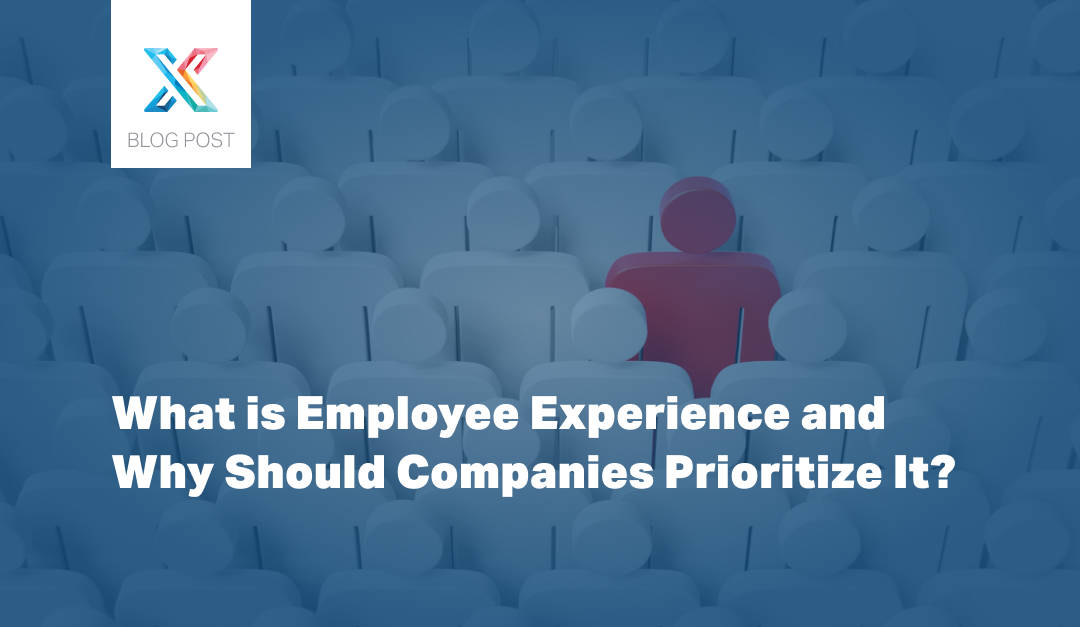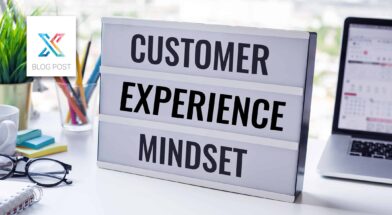You’ve seen the classic cartoon moments when employees stare at the clock, anxiously awaiting for it to strike 5 pm so they can make a run for it. It’s humorous in TV shows, but no company actually wants its employees to feel that way about their work. If you run a business, you probably hope your employees feel so passionate about their tasks that they lose track of time entirely. The critical question becomes: are you actively implementing the correct strategies to transform that aspiration into tangible reality?
If you want your employees to care as much about your company’s big-picture goals as you do, then it’s time to focus on employee experience. A company is only as great as the sum of its parts, and your employees are the most critical parts. Organizations that are on the cutting edge of knowing what makes a company thrive in today’s corporate climate are prioritizing employee experience. If you feel like your company needs an energy boost, a revamp, or even a total reboot, start by focusing on employee experience, and the rest will fall into place.
What is Employee Experience
One employee experience definition, put simply, could be this: It’s every interaction that your employees have that drive and emotional reaction during every stage of their employment. Those are the basics, but there are many layers and various factors that impact how an employee would rate their experience. Some of these include:
- Seeing growth potential within the company
- Feeling trusted and respected by management
- Being acknowledged and praised for accomplishments
- Having access to great technology that helps them do their job
- Feeling that open communication is encouraged and welcomed
Employee experience doesn’t only occur once an employee is in the full swing of their responsibilities. It begins as early as the hiring process, continues through training and onboarding, and, of course, during employment. Employee experience even occurs during the exit phase (i.e., leaving the company) through things like exit interviews, severance packages, and assistance finding new work.
Some employee experience examples you might find in the onboarding process could be how straightforward the training tools are or how communicative the training manager is. Employee experience examples during the hiring process might be the length of the interview and the recruiter's attitude. Anything impacting an employee's feelings about a company is part of the employee experience.
Why is the Employee Experience Important?
The phrase “employee experience” is relatively new in the professional ether. That’s because, in previous generations, most companies were primarily focused on their bottom line. There was certainly a heavier emphasis on customer experience than employee experience. That’s because customer satisfaction directly impacts sales.
Previously, if companies weren’t seeing the profits they wanted, they’d focus on areas like increasing the marketing budget or finding more investors. In recent years, the conversation has changed. Companies are taking a more holistic approach to reaching their goals. They’re making improvements from the inside by focusing on employee experience.
The truth is that only focusing on margins without focusing on employees would be like trying to stop a dam with a band-aid. If your company isn’t seeing the numbers it wants, you simply have to know where the root of the issue is. Typically, it starts with unsatisfied employees.
Employee Retention
Many companies mistakenly believe that salary is the driving force behind an employee’s decision to stay at a job or leave. However, research has found that overall personnel experience is 10 times more likely to influence someone’s choice to walk away from a role than compensation. This information is critical to companies because losing employees costs money.
From paid job ads and recruiters to extra HR assistance, there are a lot of expenses involved in hiring someone. So, companies should care about creating an employee experience that makes employees want to stay.
Employee Satisfaction
A person’s environment, combined with their prospects for career development — two significant components of employee experience — can impact mental health. And mental health affects productivity. An estimated 12 billion work days are lost annually to depression. That accounts for roughly $1 trillion in productivity. When employees aren’t satisfied with conditions at work, the entire company suffers.
Many companies dedicated to employee experience design a physical workplace and workday structure that can boost mental health and employee satisfaction. These companies know that when their employees are happy, everyone benefits.
Overall Team Performance
Positive energy is contagious, and when you get several positive individuals together, the feeling seems to grow exponentially. That’s the power of ensuring everyone at your company has a good employee experience.
When it’s time for employees to collaborate on a project, the team will be as strong as its weakest link. If everyone approaches the project feeling respected, supported, and optimistic, you’ll quickly see that the team creates impressive results. However, if even one person has a poor employee experience, their dissatisfaction can influence their team members, and the project will suffer.
The foundation of a successful company lies in the strength of its teams, and the key to building strong teams is ensuring the happiness and satisfaction of each employee. Keep this pivotal fact in mind.
Customer Satisfaction
The key to putting out a great product or service that clients rave about starts with having satisfied employees. Research has even shown a positive correlation between employee satisfaction and client satisfaction. When employees have a good experience, they are more likely to go above and beyond for their company. Plus, they bring a positive attitude to client interactions. So, if you’re wondering, “What is employee experience going to do for my bottom line?” the answer is a lot.
Clients can feel when employees are genuinely satisfied in their roles, which instills confidence in the company as a whole. When asking for customer feedback, one good question might be: do you feel our employees are satisfied in their roles? Their answers could be illuminating. It’s one reason Client Savvy’s Employee Engagement Platform combines employee and client surveys, giving companies crucial insights into how the satisfaction of both these groups impacts success.
5 Ways to Enhance the Employee Experience
Creating an employee experience strategy doesn’t have to be intimidating. It’s something companies can continuously perfect over time. However, there are some building blocks to boosting personnel experience that you can get started with.
1. Use Employee Engagement Surveys
Just like you might ask clients to fill out satisfaction surveys, it’s a smart idea to have employees fill out surveys, too. An employee experience survey gives company personnel a chance to voice their opinions and concerns in a low-pressure way. You can make the surveys anonymous, but you should not. After all, what can you do about a complaint if you do not know who mentioned it?
Remember, just like you don’t take client feedback personally, you shouldn’t take challenging employee feedback personally, either. Rather than allow employee criticism to bring you down, see it as an opportunity to improve and drive deeper loyalty.
2. Create an Uplifting Company Culture
Company culture describes a company’s values, beliefs, attitudes, and behaviors. A positive company culture is almost palpable. When you walk into an office with great company culture, employees seem happy, ideas are flowing, and there is an overall sense of forward momentum.
Give some thought to what you want the company culture to be at your company. If you want it to be vibrant and collaborative, consider an open floor plan so people can easily communicate ideas without knocking on closed doors. Maybe add some colorful bean bag chairs instead of dull, standard office chairs. Allow employees to show their personal style rather than stick to blazers and suits.
The company culture you choose to create provides an employee experience framework. It will influence everything from office design to the technology you use to what types of holiday parties you throw.
3. Encourage Open Communication
One crucial element of a good employee experience is open communication. Employees who feel uncomfortable asking questions or pitching ideas often feel stifled and move on to other companies. However, when managers welcome ideas and questions from all levels of employees, everyone has room to grow and improve.
Platforms like Client Savvy offer easy-to-use tools for welcoming employee feedback and gauging employee satisfaction. In fact, setting employees up with Client Savvy software can be a big step towards showing that you’re building a culture of open communication at your company.
4. Automate Workflows When Possible
Most companies will tell you that they want to be efficient, but not all of them are proving it through their processes. When you put money and resources towards finding top talent, you want their time liberated so they can focus on top-level tasks. One way to do that is by providing technology that automates workflow.
Platforms like Client Savvy automate the customer and employee feedback workflow. So you, your employees, and your customers can efficiently communicate concerns and needs. No handing out physical surveys or conducting in-person interviews on customer or employee satisfaction. It can all be handled in the Client Savvy interface so everyone can focus on their top priorities.
5. Offer Workplace Flexibility
Today, employees care about work-life balance more than ever. The arbitrary 9-to-5, in-office structure is dying out, and companies that recognize that are thriving. In fact, research shows that 82 percent of employees expect their company to support them in achieving work-life balance.
One way companies can boost work-life balance is by offering flexible hours and even work-from-home days. Benefits such as these can be tremendously helpful to parents and similar caretakers juggling family and work responsibilities. A flexible environment also shows your employees that you trust them to handle their duties, even when you cannot monitor them 24/7.
Employee Experience Software From Client Savvy
A successful company begins with its employees, and companies that aren’t focusing on employee experience are being left in the dust. A huge pool of research shows that happy employees are more invested in the company’s goals, produce better work, and stay at companies longer. However, measuring employee experience isn’t as simple as looking around the office and ensuring people are smiling. It’s essential to use tools like Client Savvy’s Employee Engagement Platform, trademarked and patented as The Client Feedback Tool, to get detailed intel on your employees’s satisfaction.
It’s time for companies to recognize that employee satisfaction is as important as a healthy marketing budget or a brilliant social media team. Employees are the life force of a company, and how they feel about their place of work permeates every level of output. Check out Client Savvy today if you are ready to prioritize employee experience at your company.





